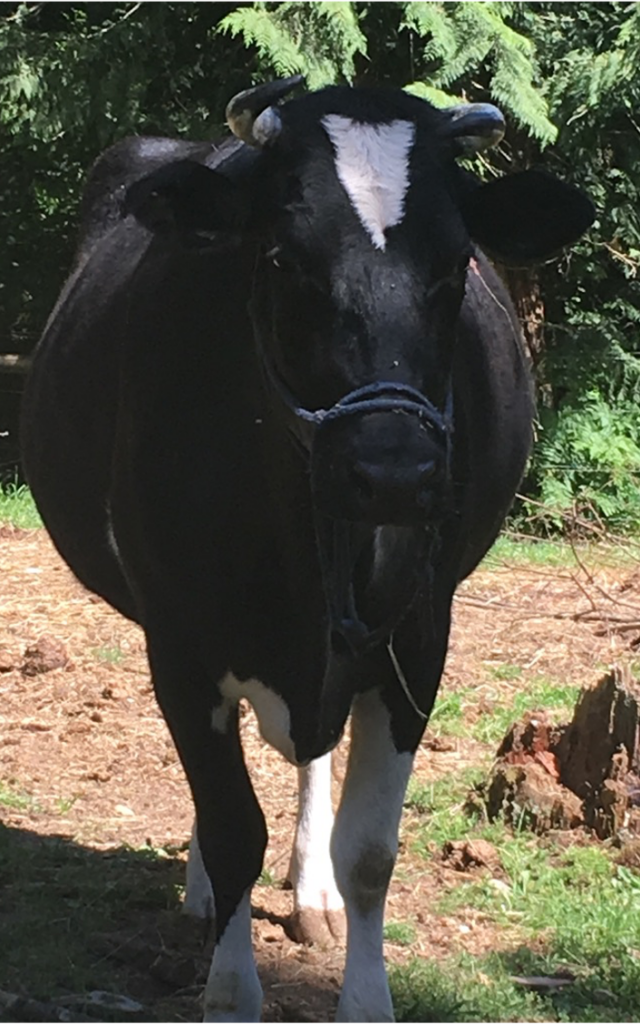By Marc J. Elzenbeck
Empty pastures are like the vacuums which nature abhors. If you happen to have one, fenced and reasonably capable of growing grass, things will appear to fill it.
Soon enough, someone is bound to notice, and ask, “Would you like a slightly used goat? How about two?” If you respond, “Yes, but only if you drop them off and lock the gate,” you’ll be amazed at the speed. Presto!
And so it was that we obtained the sweet-tempered Millie, and her young sidekick, the high-born Billy. Millie fulfilled her purpose as a defoliant, but Billy, an African import, was so picky his lips touched neither native nor invasive Himalayan blackberry leaves. He preferred kale, lettuce, the bark of fruit trees, and above all, flower beds.
As it turned out, after Millie passed away from old age or constant molestation, Billy wasn’t as “fixed” as had been claimed. Greener pastures were found after a determined search, and Billy managed to wind up as stud on a goat farm across the country in upstate New York – a happier fate than smuggling him into Seattle in the wee hours and tethering him on a former neighbor’s back lawn.
On the plus side, we learned a fair amount about goats, in that they may come, and they may go.
At some point in the goat experiment a displaced young Holstein needed refuge, and after due process, we responded, “Yes, but only if you drop her off and lock the gate.” As a kid I attended a Cow Pie High located between two commercial dairies, and even dodged bulls while picking apples. Manure is familiar territory.
Decades later, my wife attended an immersive Permaculture Boot Camp on Vashon. While there she hit it off with a bunch of people, one of them from an old island family here well before Ma & Pa Kettle (see “The Egg and I”) became cultural icons. Her perma-buddy had adopted the homeless Holstein, temporarily placing her with a foster herd of Austrian Highlands.
Then, a local radio company, which had at first seen value in a free lawnmower under their towers, reneged on a promised hosting deal, citing plausible fears its underground antenna network could be bent out of shape. We were Plan C, so one bright October morning a cheery woman from the Institute of Advanced Bovine Studies hauled in Minnie, complete with papered pedigree, to take possession of our pasture. And then our lives.
Certain facts had been left undisclosed. She was the biggest cow I’d ever seen. The Guinness Book of World Records still lists the largest Holstein, now deceased, as standing 6 foot 4 inches. While we never bothered to measure, in order to look Minnie in the eye, I had to look up. A year and a half old and already on the far side of a perturbed 3000 pounds, she shook her massive head and let loose with signature bellows that could rattle old windowpanes and your solar plexus.
No one admits to it now, but one of the kids re-christened her right away to “Leslie Lou Minnie Moo.” It stuck. (My suggestion, “Cowzilla,” was shot down with prejudice.)
Now, you can dabble in goats, but cattle demand commitment, even resolve. They will not be ignored. As co-evolved as dogs, they are the answer to that eternal question, “What should we do with all this grass?” There was plenty of it, and Leslie was settled in behind secure new fencing with 55 gallons of clear water and a fresh salt lick.
I walked back to dial into a conference call, and while it was winding down, a notification popped up on a Vashon Facebook group. It said there was a cow loose on the highway, and my immediate thought was: “Hahaha! What kind of dumb hayseed would let … their cow … oh.”
To be continued.

